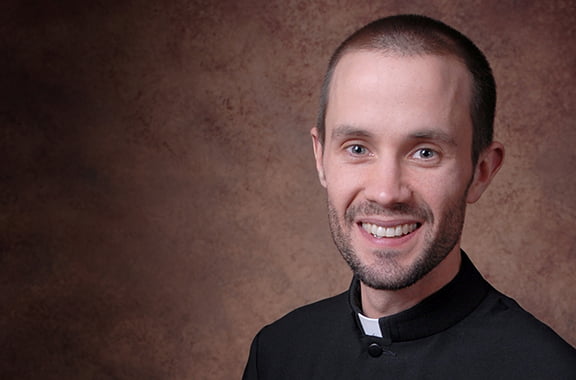
Father Scott Wallisch is the archdiocesan vocations director. You can email him at: frscott@archkck.org
by Father Scott Wallisch
At the beginning of second grade, our teacher was Sister Mary Bede.
She diligently prepared us for our first reconciliation and Communion. She lived on the school grounds in a small convent with the school principal, Sister Bernadette. Students had opportunities to encounter these religious Sisters on a regular basis.
Halfway through the school year, their religious order unfortunately needed to move them. That was the last time I had a Sister or priest as a teacher for the rest of my 13 years of Catholic school education (until seminary, of course).
Sisters teaching in a Catholic school are now the exception, and overloaded priests are able to spend less time in classrooms. Our students do not see priests and Sisters on a regular basis, which has made it more difficult for students to discern if these vocations might be for them. Our lay Catholic school principals and teachers are left with the task of trying to encourage students to explore the possibility of a religious vocation. This is understandably difficult when these adults have not themselves been called to priestly or religious life.
In an attempt to assist our Catholic schools as they help students explore all vocations, the archdiocesan vocation office has recently provided two tools. My column here in the spring discussed one of those tools: school vocation clubs.
This fall, we have introduced a second tool for our Catholic schools. Vocation Lessons is a curriculum for vocations developed by Vianney Vocations. Although theology textbooks usually have some lessons on vocations, nothing is as comprehensive, in depth, and effective as this new curriculum.
The curriculum starts in kindergarten and continues to senior year in high school. There are four full class lesson plans for each grade level, with all of the materials accessible online.
These plans include objectives, Scripture, activities, and prayer. Families are engaged in the discussion. Marriage, priesthood, and religious life are addressed each year, and priesthood and religious life are presented as the compelling and rewarding vocations that they are.
Also, wisdom is given in choosing a spouse and building strong marriages.
Eventually, we plan on inviting our religious education programs to include similar lesson plans in their yearly syllabi. It is a top priority to give all of our children as many opportunities as possible to discern their vocations well.
These lessons will not take the place of having priests and religious in our class- rooms on a regular basis, but they will give students at least a yearly opportunity to take their vocational discernment more seriously. It is one more step in building a culture for vocations and helping our church discover more Sister Mary Bedes.

